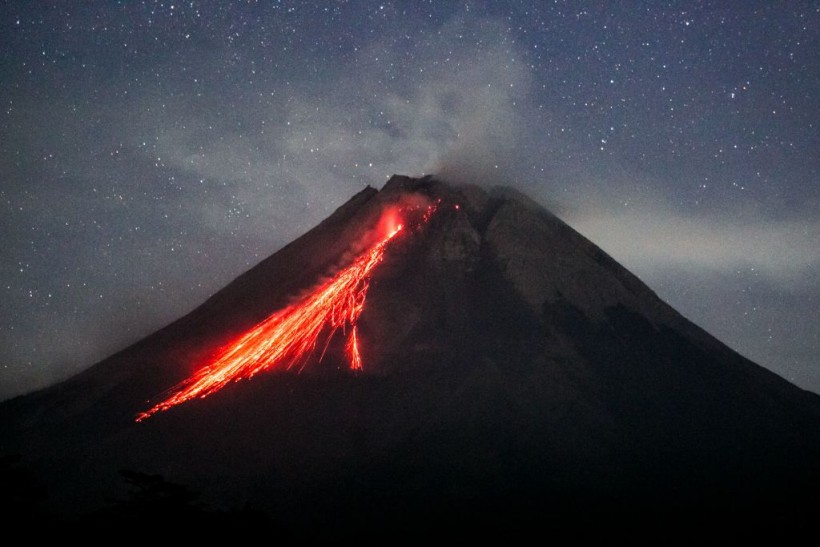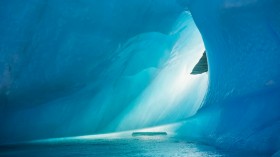Volcanoes are among the most awe-inspiring and destructive natural phenomena on Earth. They can create new land, shape landscapes, and affect climate.
They can also pose serious threats to human lives, property, and infrastructure.
In the US, there are more than 160 active or potentially active volcanoes, and 18 of them are classified as "very high threat" by the US Geological Survey (USGS).
However, not all of them are receiving adequate scientific monitoring and research, which could hamper the ability to prepare for and respond to future eruptions.
How are volcanoes ranked by threat level?
 (Photo : DEVI RAHMAN/AFP via Getty Images)
(Photo : DEVI RAHMAN/AFP via Getty Images)

The USGS recently updated its volcano threat assessment for the first time since 2005, using 24 factors to evaluate the potential severity of impacts from future eruptions.
The factors include the type of volcano, how explosive it can be, how recently it has been active, how frequently it erupts, if there has been seismic activity, how many people live nearby, if evacuations have happened in the past, and if eruptions disrupt air traffic.
The volcanoes are then sorted into five threat levels, ranging from very low to very high. The highest threat level includes 18 volcanoes, mostly located in the western states of Alaska, California, Oregon, and Washington.
The top five are Kilauea in Hawaii, Mount St. Helens and Mount Rainier in Washington, Redoubt Volcano in Alaska, and Mount Shasta in California.
The threat assessment does not indicate the likelihood of an eruption, but rather the potential consequences if one occurs.
For example, Kilauea, which has been erupting continuously since 1983, is the most active volcano in the US and has caused significant damage to nearby communities and infrastructure in recent years.
Mount Rainier, on the other hand, has not erupted since the 19th century, but is considered the most dangerous volcano in the US because of its proximity to millions of people and its potential to generate massive lahars (volcanic mudflows) that could reach as far as Seattle.
Also Read: Taal Volcano Remains Under Alert Level 1 After Volcanic Smog Emission
Why are some high-threat volcanoes understudied?
Despite the high risks posed by some of the volcanoes, not all of them are equally monitored and studied by scientists.
According to a recent study published in the journal GeoHealth, some of the high-threat volcanoes are severely understudied, meaning that they have fewer than 10 peer-reviewed publications in the past 100 years.
The study identified 21 understudied volcanoes in the US, nine of which are in the very high threat category.
These include Mount Baker and Glacier Peak in Washington, Crater Lake and Newberry Volcano in Oregon, Long Valley Caldera and Lassen Volcanic Center in California, Makushin Volcano and Akutan Island in Alaska, and Mauna Loa in Hawaii.
The study also found that the level of scientific attention given to a volcano is not only related to its threat level, but also to its geographic location, accessibility, and historical activity.
For instance, volcanoes that are closer to major cities, airports, or research institutions tend to receive more attention than those that are remote, inaccessible, or dormant.
Additionally, volcanoes that have erupted in the past century or have shown signs of unrest tend to attract more interest than those that have been quiet for longer periods.
The authors of the study argued that the lack of scientific knowledge about some of the high-threat volcanoes could have serious implications for hazard assessment, risk communication, and emergency management.
They suggested that more funding and resources should be allocated to improve the monitoring and research of these volcanoes, as well as to enhance the collaboration and coordination among different stakeholders, such as federal and state agencies, academic institutions, and local communities.
What can be done to improve volcano preparedness and response?
Volcanoes are unpredictable and complex systems that require constant vigilance and adaptation.
The USGS and other organizations are working to improve the understanding and forecasting of volcanic activity, as well as to provide timely and accurate information and warnings to the public and decision-makers.
However, there are still many challenges and gaps that need to be addressed, such as:
- Increasing the coverage and quality of the volcano monitoring network, which consists of various instruments and sensors that measure parameters such as seismicity, deformation, gas emissions, and temperature. Some of the volcanoes, especially in Alaska, have limited or no real-time monitoring, which makes it difficult to detect and track changes in their behavior.
- Enhancing the volcano research capacity, which involves conducting fieldwork, laboratory experiments, numerical simulations, and data analysis to better understand the physical and chemical processes that drive volcanic eruptions and their impacts. Some of the research topics that need more attention include the dynamics of magma storage and transport, the generation and propagation of volcanic hazards, and the effects of climate change on volcanism.
- Improving the volcano risk communication and education, which entails developing and disseminating clear and consistent messages and products that inform and engage the public and stakeholders about the potential hazards and mitigation strategies.
Some of the challenges that need to be overcome include the uncertainty and variability of volcanic phenomena, the diversity and accessibility of the audiences, and the influence of social and psychological factors on risk perception and behavior.
Volcanoes are natural wonders that can also pose significant threats to human society.
By increasing the scientific knowledge and awareness of some of the most dangerous volcanoes in the US, we can better prepare for and respond to future eruptions, and reduce the potential losses and damages.
Related article: Antarctica: Dormant Underwater Volcano Awakens, Causes 85,000 Earthquake Swarms
© 2024 NatureWorldNews.com All rights reserved. Do not reproduce without permission.

![Plastic Pollution: Scientists Include Spores of Plastic-Eating Bacteria ‘Bacillus Subtilis’ to Develop 'Self-Digesting Plastic' [Study]](https://1471793142.rsc.cdn77.org/data/thumbs/full/70396/280/157/50/40/plastic-pollution-scientists-include-spores-of-plastic-eating-bacteria-bacillus-subtilis-to-develop-self-digesting-plastic-study.jpg)



